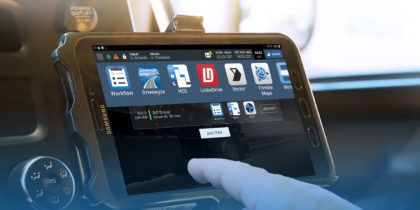Director and cinematographer Melody C. Miller remembers exactly when visual storytelling became a passion for her. “When I was 15 years old, I found my grandpa’s 35mm camera from the 1950s. When I had that in my hands I was able to tell my own story — I was able to do whatever I imagined.”
With the Samsung 360 Round, Miller has been empowered to move beyond the traditional 16:9 widescreen film format, taking her passion in a new direction. “It’s really exciting for me as a storyteller because, before, I would show someone a square picture, and now I can bring them into a whole 360 degree environment,” she says.
Cinematographer and colorist Jason Knutzen agrees. “VR is a really exciting technology that can transport the stories away from the mediums we’re used to.”
Miller and Knutzen had the opportunity to explore the the possibilities of 360 degree virtual reality storytelling in a recent shoot with the 360 Round.
Writing on the Fourth Wall
When technology transforms a once-familiar medium, it takes some adjusting.
“In traditional filmmaking you have the fourth wall,” Knutzen says, referring to that invisible wall erected between the viewer and the on-screen action. It’s behind that wall that the crew, camera, lighting equipment and so on hide during film production.
In an immersive VR environment, there is no wall. For filmmakers, that presents some unique challenges. How do you manage storytelling and what viewers see when they can literally see everything? Miller says, “As a visual storyteller you want to make sure that the elements that are around the 360 degree environment look good in every direction, and you have to guide the viewer through the experience. So planning out storyboards, planning out blocking is extremely important.”
A Camera for All Seasons
While this immersive filmmaking process requires some getting used to, the camera itself proved to be intuitive. “The Samsung 360 virtual reality camera is built for professionals,” says Miller. “It provides exposure and camera controls that we’re used to seeing on professional cinema cameras, so it was really easy to adapt to and learn how to use.”
The Ultimate Guide to 360 Video Production
Everything you need to start creating 360 video, from pre-production to post and distribution. Download Now
The Samsung 360 Round uses 17 lenses so it can live stream 4K 3D video and spatial audio. It’s also IP65 rated for water and dust resistance so it can be used even in challenging filming environments. The compact unibody chassis is built for hours of continuous shooting and is designed to reduce heat and power consumption.
New Possibilities in Every Direction
Professional filmmakers are excited by the possibilities of the new format. As Miller notes, “Virtual reality opens up your creative imagination to bring viewers into an immersive storytelling experience that will compel them in a more humanistic way. It’s like you’re there in real life.”
The next adoption obstacles will be educating viewers on how to explore the realm of VR and getting businesses to understand its advantages. VR 360 video is already transforming industries from healthcare to real estate to defense — and Knutzen foresees the long-term benefits. “I think as more businesses start to recognize and understand the ways 360 can be used for their particular field it’s going to present a lot of interesting opportunities for business owners.”
“This really is a unique way to set yourself apart from the rest of the field.”
Interested in 360 video production? Download our comprehensive guide, covering everything from storyboarding to post-production.







